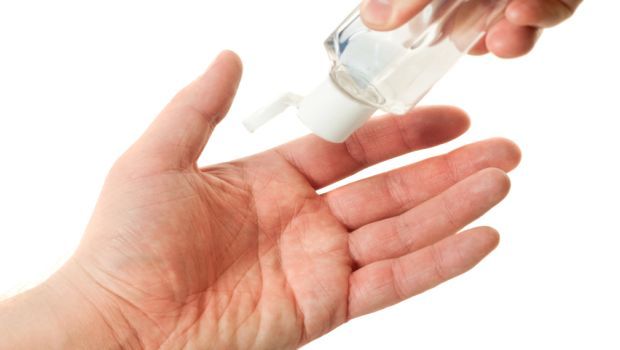Identification of Product Dry-Time as a Primary Driver of ABHR Efficacy

The World Health Organization has called for the development of improved methodologies to evaluate alcohol-based handrub (ABHR) efficacy, including evaluation at “short application times and volumes that reflect actual use in healthcare facilities." The objective of this study by Suchomel, et al. (2018) was to investigate variables influencing ABHR efficacy, under test conditions reflective of clinical use.
The test product (60% V/V 2-propanol) was evaluated according to a modified EN 1500 methodology, where application volumes of 1 mL, 2 mL, and 3 mL were rubbed until dry. Statistical analyses were performed to investigate the relative influences of product volume, hand size, and product dry-time on efficacy, and hand size and hand contamination on product dry-time.
Mean log10 reduction factors (SD) were 1.99 (0.66), 2.96 (0.84) and 3.28 (0.96); and mean dry-times (SD) were 24 s (7 s), 50 s (14 s), and 67 s (20 s) at application volumes of 1 mL, 2 mL, and 3 mL, respectively (p ≤ 0.030). When data were examined at the individual volunteer level, there was a statistically significant correlation between dry-time and log reduction factor (p < 0.0001), independent of application volume. There was also a statistically significant correlation between hand surface area and dry-times (p = 0.047), but no correlation between hand surface area and efficacy (p = 0.698).
The researchers conclude that when keeping other variables such as alcohol type and concentration constant, product dry-time appears to be the primary driver of ABHR efficacy suggesting that dosing should be customized to each individual and focus on achieving a product dry-time delivering adequate efficacy.
Reference: Suchomel M, et al. How long is enough? Identification of product dry-time as a primary driver of alcohol-based hand rub efficacy. Antimicrobial Resistance & Infection Control. 2018;7:65
The Guardians of Animal Health: Who Are Veterinary Infection Preventionists?
March 21st 2025Veterinary infection control experts Leslie Kollmann, BS, AAS, CVT, CIC, Denise Waiting, LVT, and Leslie Landis, LVT, BS, discuss challenges, zoonotic disease risks, and the importance of education, collaboration, and resource development in animal care facilities.
The Latest on CLABSIs and CAUTIs: Evidence-Based Approaches for Infection Prevention
February 27th 2025Health care–associated infections like CLABSIs and CAUTIs threaten patient safety. Learn evidence-based strategies, new technologies, and prevention protocols to reduce these infections and improve outcomes.
Resilience and Innovation: The Pivotal Contributions of Black Americans to Health Care and Medicine
February 24th 2025During Black History Month, we honor the resilience and contributions of Black medical professionals in health care. Despite barriers, they have led transformative changes, advocating for equitable access and medical excellence. Recognizing their impact ensures a more inclusive health care future for all.
Glove Usage Guideline: From The Joint Commission, CDC, and World Health Organization
February 17th 2025Proper glove use is crucial in health care settings to prevent infections. Guidelines from TJC, CDC, and WHO stress correct selection, usage, and disposal to minimize health care–associated infections (HAIs) and cross-contamination risks. Infection preventionists (IPs) play a key role in educating staff, enforcing compliance, and improving patient safety through standardized glove practices.